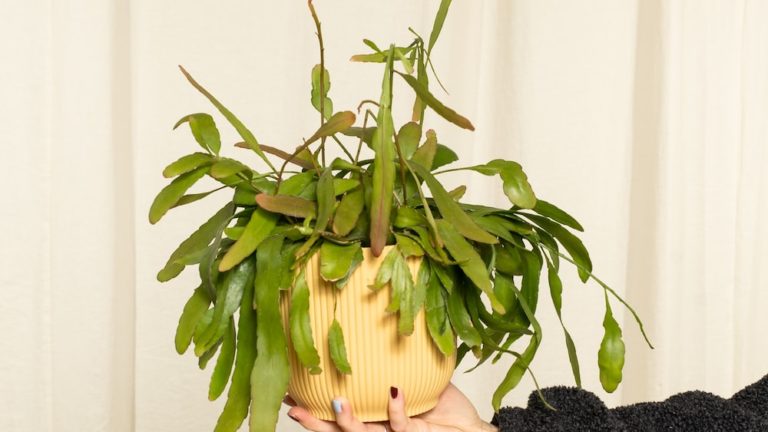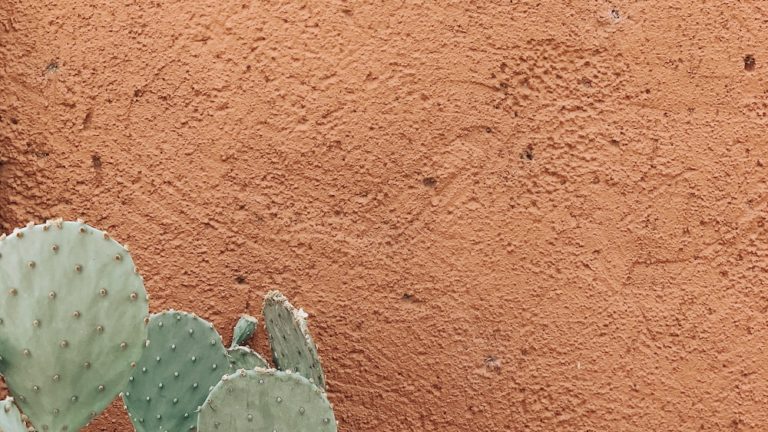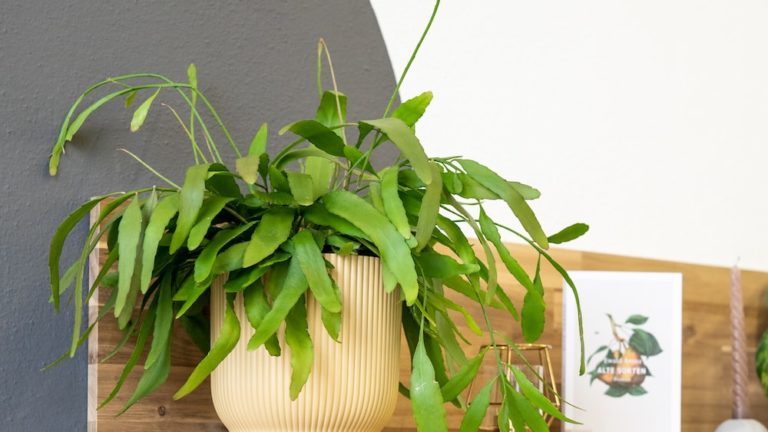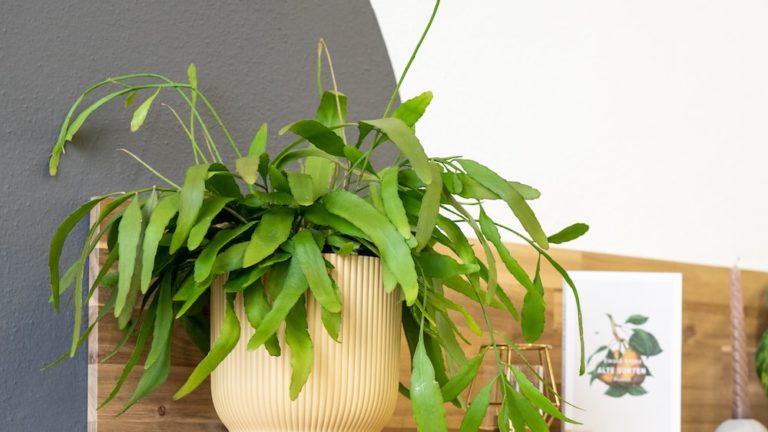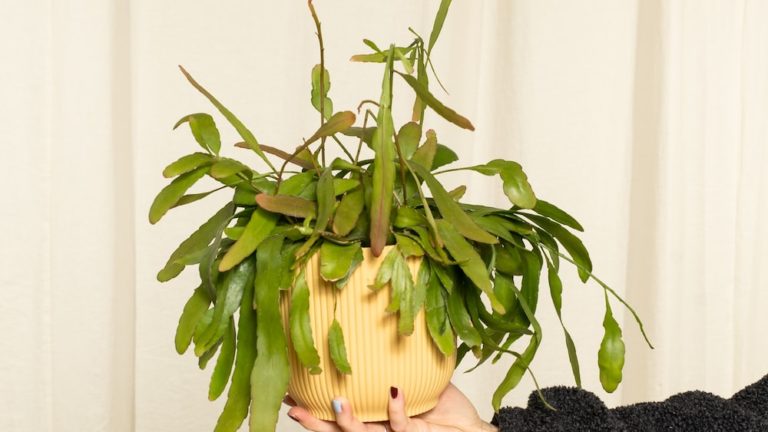19 Rhipsalis Species You Need To Know: Ultimate Rhipsalis Species List
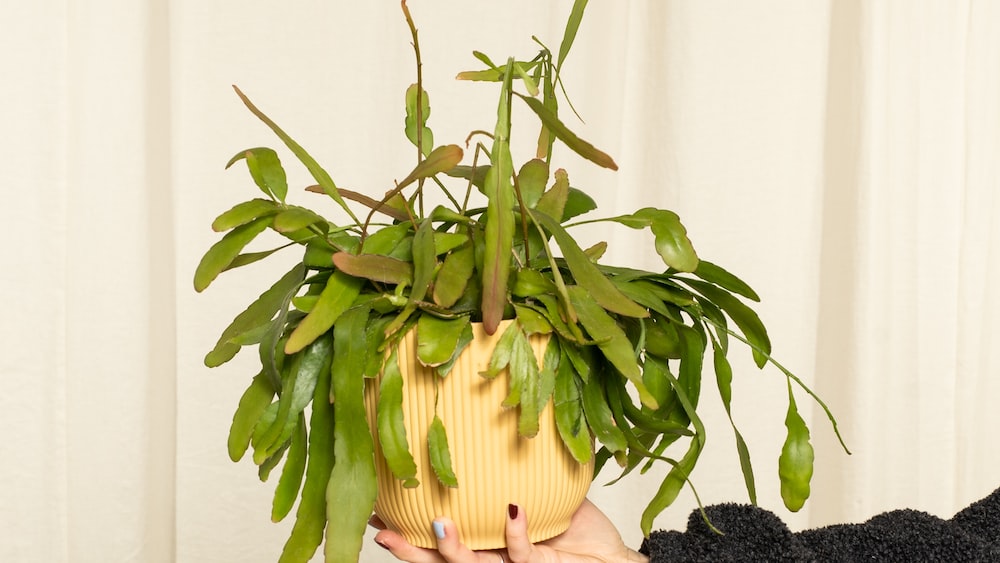
19 Rhipsalis Species You Need To Know: Ultimate Rhipsalis Species List
Hello, dear cacti enthusiasts and plant lovers alike! Within the vast kingdom of nature, one plant type holds a special charm and mystique for me: the wonderfully unique rhipsalis. These radiant, hanging gems of my garden have long held my fascination, with their diverse forms and their testament to nature’s inventive variability. Basking under the tender rays of sunshine, or conversely braving the chilly moonlit nights, they carry a quiet, resilient strength.
Now, when was the last time you paused your hustle, and took to appreciating these prickly friends? For in their unassuming presence, they’re a living testament of resilience – and that’s not merely my fanciful supposition. An extensive body of research is on my side, such as a study by Ortega-S, J.A. et al. (2021), which highlights the adaptability of cacti and their exceptional survival rates under fluctuating environmental conditions. It’s as if every rhipsalis whispers a story of triumph against the odds, don’t you think?
In this comprehensive post, I will unmask the enchanting layers of 19 different rhipsalis plants from my personal rhipsalis species list. Arming you with the understanding of their unique attributes, cultivating needs, and most importantly, teaching you the art of appreciating these green beauties. So, let’s embark on this prickly quest together, shall we?
Understanding Rhipsalis
The journey begins with comprehending what this plant exactly entails. Allow me to peel back the layers of mystery surrounding the world of rhipsalis.
What is Rhipsalis?
The rhipsalis, my friends, is no ordinary plant. Originating from the rainforests of South America, it’s a novel cacti genre recognized for its trailing, or hanging forms. The name, as explained by the Greek historian Dioscorides in 70 A.D., originates from the Greek term ‘rhíps,’ translating to ‘wickerwork,’ alluding to the plant’s flexible stems.
But what makes rhipsalis not just any cactus, but a fascinating phenomenon, is its epiphytic nature. That’s right – these cacti are not ground dwellers. Instead, they make a cozy home high up in the tree canopies, dwelling on other host trees yet being far from parasitic. They only use the trees for physical support, creating an intricately balanced ecosystem. Isn’t that wonderful?

Finally, did you know that rhipsalis is the only cactus genus that is naturally found worldwide? Its one species, Rhipsalis baccifera, has managed to spread to parts of Africa, Madagascar, and Sri Lanka – thanks to our feathered friends, the birds! It’s fair to say, this intriguing plant knows no boundaries!
Rhipsalis is a unique and fascinating cactus that thrives in the tree canopies, forming a symbiotic relationship with its host trees and spreading worldwide with the help of birds.
Characteristics of Rhipsalis
Oasis of biodiversity, the rhipsalis family has about 35-50 recognized species, each unique in its way. While they share a common ancestry, what differentiates them is their stem structure and flowers.
First off, rhipsalis plants generally have a segmented growth. The stems, varying between cylindrical, angular, or even flat-morphology, are often beaded or branched, giving it an attractively messy appearance. It feels like strands of green pearls cascading down from the pot, doesn’t it?
Next, the flowers, whilst small, are a spectacle in themselves. Projecting directly from the branches, they’re predominantly white, sometimes merging into yellow or red hues, followed by fleshy, berry-like fruits. These features, combined with their low-maintenance needs, make rhipsalis an excellent indoor companion for both seasoned plant enthusiasts and novices.
19 Rhipsalis Species You Need To Know
As we wade deeper into the world of rhipsalis, let’s inch closer to the heart of this article – the 19 rhipsalis species that ought to feature in every cacti enthusiast’s knowledge arsenal. Let the revelation commence!
1. Rhipsalis Baccifera
Even among rhipsalis, some species hold a special place, and Rhipsalis baccifera is undeniably one. Referred to as the ‘mistletoe cactus,’ this species is the definition of dainty resilience.
Being an epiphyte, it boasts of beautiful cascading branches that can grow up to a foot long. A characteristic feature of Rhipsalis baccifera is the occasional branching into smaller segments. But, what truly sets it apart is its flexibility in habitat. While most comfortable in mild, indirect light conditions, it proves its mettle by thriving even in lower light conditions! It’s indeed humbling how these modest, tiny plants exhibit such adaptability!
With white to pinkish flowers that bloom into attractive translucent berries, these rhipsalis plants are an enchanting spectacle. Not only do they add invigorating greenery to your spaces, but they’re also a testament that flourishing isn’t confined to ideal conditions.
2. Rhipsalis Burchellii
Allow me to introduce you to the Rhipsalis Burchellii, a species fondly known by the name ‘spaghetti cactus.’ Bursting with vivid green cylindrical stems, they fashion an enthralling contrast against the white-walled spaces of indoor environments.
The stems, though narrow, possess a charming flexibility, bending in beautiful curves and thriving in an attractive, messy way. Adorned with small scale-like bristles, these cascading stems are a canvas of nature’s eccentricities, offering textured leafless branches that sway soothingly with the rhythm of the wind.
3. Rhipsalis Campos-portoana
Welcome to the world of Rhipsalis Campos-portoana, another fantastic species that demand admiration. This Brazilian-born rhipsalis possesses a particular charm that is hard to resist. The plant paints a picture of cascading elegance, with its flat, slightly curved stems dripping like green ribbons from their pot.
This species is unique due to its growth pattern as well. The stems hang thick and close, giving the plant a delightful bush-like appearance. When properly nourished, Rhipsalis Campos-portoana blossoms into delicate, tiny white flowers, transforming the green ensemble into a beautiful white polka-dotted spectacle.
Apart from their undeniable beauty, these plants have something profound to teach: richness doesn’t lie in overwhelming grandeur. Sometimes, it resides in the meticulous, small details that require a keen eye to spot and a warming heart to appreciate.
Rhipsalis Campos-portoana teaches that true beauty and richness can be found in the small, meticulous details that require a keen eye and a warming heart to appreciate.
4. Rhipsalis Cereuscula
Next in line is a species that goes by the intriguing name – Rhipsalis cereuscula. With their chubby, light-green stems, these plants add an enlivening touch to your living spaces. Over time, they transform into a spectacular waterfall of branches cascading down and spreading sideways, making your humble spaces feel like an encompassing forest.
What sets Rhipsalis cereuscula apart is the peculiar structure of its segments. Resembling coral structures, they have multiple rounded projections, which, when viewed at a specific angle, impart the fascinating illusion of miniature cacti branching out of the main stem. Lend them light, and they unfurl even further, gracing you with delightful white flowers that add to their visual appeal.
And like all its rhipsalis cousins, the Rhipsalis cereuscula isn’t just about the aesthetics. They are nuggets of humble wisdom, manifesting growth in diversity and strength in flexibility – life lessons we could all take a leaf from, couldn’t we?
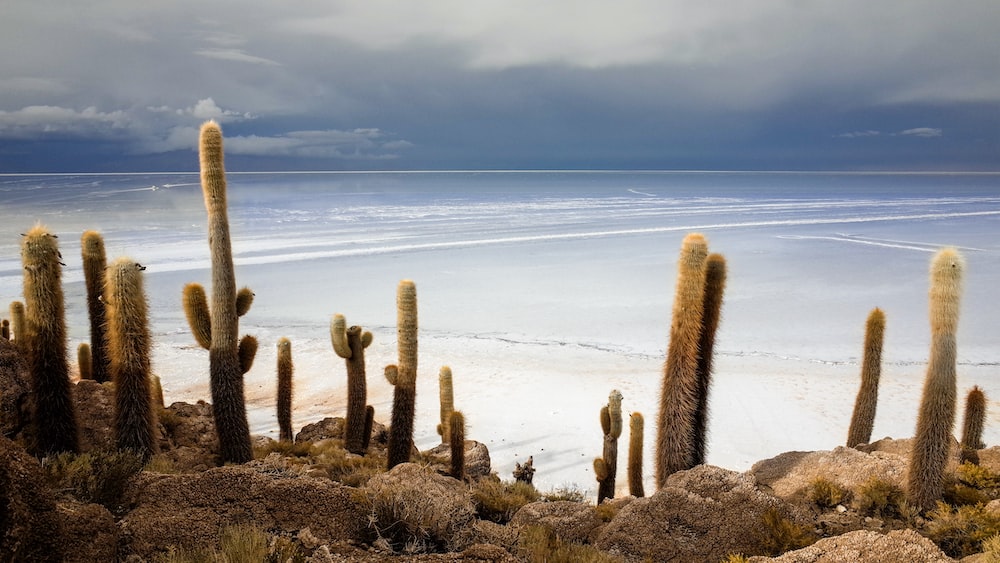
5. Rhipsalis Clavata
Are you excited to meet the next dazzling specimen from my rhipsalis species list? Say hello to the distinctive Rhipsalis clavata. A native of Brazil, it is recognizable by the unique formation of its stems, which are clavate or shaped like a club – tapering at the base and broadening towards the apex.
The cylindrical stems, with their succulent texture, can reach an impressive length of 60cm, hanging in a cluster from the plant pot. This bunch of pendulous stems, swaying soothingly with every gust of wind, adds a serene touch to your surroundings and calms the soul.
6. Rhipsalis Elliptica
Next up, I bring you another exceptional classical home plant, Rhipsalis elliptica. Once you lay eyes on it, you’ll understand why it’s named so. Pulling you in with its unsymmetrical, elliptical, and slightly compressed sections, the stems exhibit a fascinatingly disorderly pattern. This unapologetic randomness is what gives the plant its distinct charm.
Imagine, clustered together, thousands of these fascinating segments, cascading down in thick clumps, casting mesmerizing shadows that dance with the day’s changing mood. Isn’t it wonderful how a single plant can arouse so many sensations and feed our artistic inclinations?
7. Rhipsalis Ewaldiana
Pull back the curtains and let the light unfold the marvelous Rhipsalis ewaldiana. Observed closely, one can see the long, tube-like stems branching out from the base, allowing the plant to grow in a magnificent spray that flutters beautifully with every stir of the air.
As the plant matures, the green of the stems deepens, and a tangle of smaller hair-like roots grows along the base. These aerial roots act as both an anchor and a nutrient absorber when the plant finds a favorable landing spot.
When cultivated with care and love, the Rhipsalis ewaldiana rewards the grower with a display of small yet stunning white flowers that linger like tiny stars against the lush background. Thus, providing multiple opportunities to marvel at the wonders of resilience and adaptation.
8. Rhipsalis Floccosa
Now, let me introduce you to the whimsical world of Rhipsalis floccosa or ‘woolly mistletoe cactus.’ As the name suggests, the unique charm of this plant lies in the wool-like hairs adorning the new growths.
Creating a stunning contrast against the dark green stems, these hairs give the plant an overall ethereal, whitish tinge. It almost feels like a touch of winter snow wrapped around them.
The whimsical world of Rhipsalis floccosa, or ‘woolly mistletoe cactus,’ is known for its unique charm of wool-like hairs adorning new growths, creating an ethereal, whitish tinge.
9. Rhipsalis Goebeliana
Lastly, we have the impressive Rhipsalis goebeliana. Like its siblings, this rhipsalis boasts of a distinct visual appeal. With long, angular stems that hang down like the willow branches, the plant creates an attractive green curtain.
As you cultivate and care for this species, it unfolds a mesmerizing saga – blooming into an array of tiny, cream-colored flowers that further emphasize the plant’s inherent elegance. It’s a heartening sight and stands as a testament that even the prickly world of cacti can embody softness and delicate beauty.
10. Rhipsalis Horrida
Delve deep into my garden and you’ll find, nestled between proud succulents and radiant flowers, one of my favorite companions – the Rhipsalis Horrida. Its name may seem intimidating at first, but you soon come to realize the beauty inherent in this seemingly ‘horrid’ member of our rhipsalis species list. An epiphytic cactus native to South America, particularly Brazil, its leathery, green stems cascade downwards in a mesmerizing display of nature’s wizardry.
Couched in a hanging basket, the Rhipsalis Horrida transforms into a living piece of art, perfect for adding texture and contrast to any space. Clusters of mistletoe-like fruits emerge, dotting the trailing stems with a vibrant burst of white, a spectacle that never fails to delight. Its clusters of tiny, cream-colored flowers bloom primarily in spring, enticing keen pollinators and garden enthusiasts alike.
Rich in texture and form, the Rhipsalis Horrida is not your typical cactus, encapsulating an understated elegance that speaks volumes about the wonders of our natural world. What few realize is that beneath its striking aesthetics lies a well of resilience and adaptability, making it an exceptional candidate for indoor cultivation.
11. Rhipsalis Micrantha
Let me take you further into my garden, to the edges where my beloved Rhipsalis Micrantha resides. Embodying a delicate elegance, this starring member of the rhipsalis species list boasts slender, pencil-thin stems that gently droop, creating an ethereal waterfall effect. An epiphyte by nature, it feels right at home clinging to the bark of bustling trees, a testament to its resilience and zest for life.

Spread right across the tropical regions of South America, including Brazil, this beauty has become a darling in the global horticulture scene. Flowers of the Rhipsalis Micrantha are relatively small yet unforgettable, spotting delicate, translucent white blooms that seamlessly merge with the cascading green. These remarkable blossoms usually appear ‘en masse’, engulfing the plant in a snow-like spectacle and inviting a flurry of excited bees and insects.
In my experience, the Rhipsalis Micrantha is the epitome of simplicity, effortlessly embodying grace and resilience alike. Rest assured, this charming cactus offers more than meets the eye, quietly reminding us that beauty thrives not just in grandeur but also in the humble, unnoticed corners of our universe.
12. Rhipsalis Neves-armondii
Marking the twelfth spot on our comprehensive rhipsalis species list, we meet the Rhipsalis Neves-armondii. With its uniquely cylindrical, pencil-like stems and petite, star-shaped flowers, it offers a delightful novelty to any cactus collection.
Believed to hail from the forests of Brazil, this beauty reclines silently on my garden wall. I am often lulled into quiet reflection, observing its muted green stems sway gently in the breeze, stirring an air of innocent charm that is hard to resist.
Introducing the Rhipsalis Neves-armondii, a unique addition to any cactus collection with its cylindrical stems and charming star-shaped flowers from the forests of Brazil.
13. Rhipsalis Oblonga
Onward to another captivating presence on our rhipsalis species list, the Rhipsalis Oblonga. The perennial charm of this cactus lies in its simplicity – slender, cylindrical stems that flow down like a green waterfall, making it a perfect plant for those aim to create a natural curtain or barrier. A native of South America, in particular Brazil, it thrives in lowland or montane forests.
The Rhipsalis Oblonga requires minimal fuss, making it an ideal candidate for a hanging pot or basket. When provided with optimal care, this radiant jewel produces tiny white blooms. These delicate flowers, although easily overlooked at a glance, create a pristine contrast against the verdant leaves, painting an organic masterpiece that evokes a sense of serenity and nostalgia.
Staring at its rhythmic sway, I’ve often found myself lost in a realm of soothing serenity. Much like its rhipsalis brethren, the Oblonga whispers stories of survival, resilience, and the softer, often unseen miracles of the natural world.
14. Rhipsalis Paradoxa
Peering closer into our rhipsalis species list, we encounter the paradoxically-named Rhipsalis Paradoxa. Aptly named, this enchanting species often elicits surprise, with its pendulous, chain-like stems that dangle precariously from the tree branches. It hails from the rainforests of Brazil, thriving in damp, shady conditions.
Dissecting its mysterious charm, we realize the conundrum is in its stems. Evenly segmented into elegant squares, they seem to defy gravity, forming a procession of stacked boxes cascading from the treetops. It’s enchanting, almost mystifying, a head-scratching marvel mother nature graced upon us.
Each spring, delicate white flowers bloom in clusters along the stems. Bearing a charming resemblance to popcorn, these blossoms have a fleeting yet enchanting presence, making the Paradoxa an ideal choice for those seeking an answer to the riddles of the natural world.
15. Rhipsalis Pilocarpa
Nestled coyly at the fifteenth spot of the rhipsalis species list is the Rhipsalis Pilocarpa. Its petite, needle-like leaves readily distinguish this beauty, forming a captivating contrast with its finely haired, teardrop-shaped fruit. Native to the forests of Brazil, this mesmerizing cacti variety is crowned the queen of my garden.
The Pilocarpa’s most striking feature is its spectacular white blossoms, which when in full bloom, fill the air with a sweet, musky fragrance that is absolutely intoxicating. In a splendid show of ingenuity, these blossoms unfurl during the night, adding an enchanting touch to your garden under the moonlight.
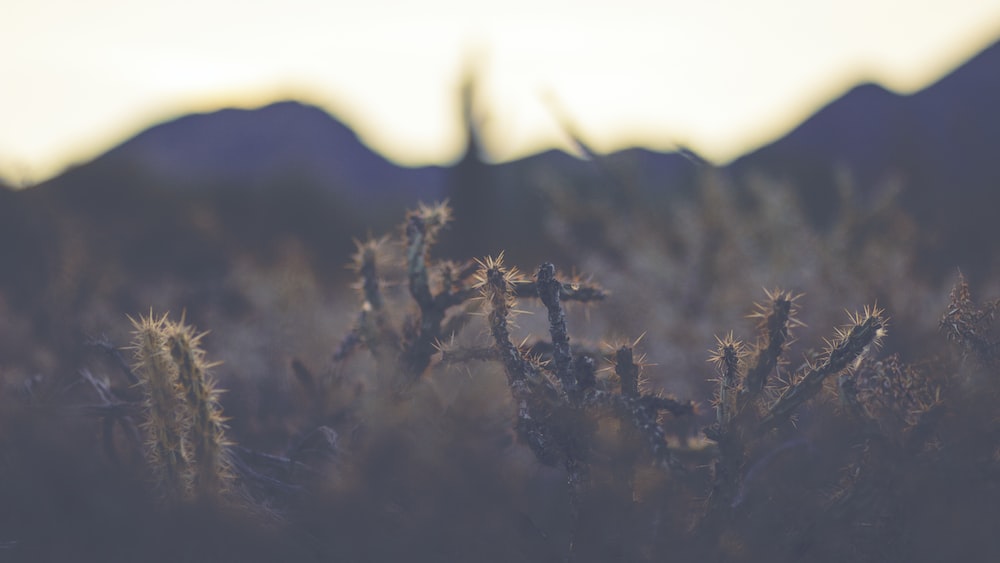
16. Rhipsalis Pachyptera
Inching further into my garden, one cannot overlook the stout and intriguing Rhipsalis Pachyptera, a proud member of our rhipsalis species list. Its unique, winged stems coupled with its ability to perch atop the tallest tree canopies deem it the ‘eagle’ of my garden.
Sourced from the heart of Brazil, the Pachyptera’s greenish-yellow flowers produce a delicate, sweet aroma, reminiscent of a tranquil walk in the rainforests. In my company, this cactus occasionally acts as a guide, gently nudging me closer towards an undiscovered world of soothing whispers, creative musings, and raw, potent energy.
17. Rhipsalis Teres
Now, allow me to introduce the seventeenth entry in our rhipsalis species list, the Rhipsalis Teres. Known for its cheerful, cylindrical stems that resemble a collection of playful green cables, it offers a delightful charm hard to resist. Believed to be native to Brazil, this cactus species flourishes as an epiphyte, living off larger organisms without inflicting harm.
In the comfort of my garden, the Rhipsalis Teres expresses itself through bursts of white blossoms that curl at the edges, giving an indication of its blissful contentment. However, its allure lies not merely in its aesthetics, but also in the subtle undertones of survival and coexistence it quietly imparts.
Without a doubt, the Rhipsalis Teres is a testament to the intricate bond of life, conveying the delicate balance that exists within nature and the resilience required to embrace change and survival. Much like an ancient seer, it speaks volumes about the transient nature of life, the impromptu dance of symbiosis, and the fundamental lessons I’ve come to value in my journey with these unique cacti.
The Rhipsalis Teres cactus is not only visually appealing with its cheerful, cylindrical stems and white blossoms, but it also teaches us about the delicate balance of life, the importance of coexistence, and the resilience needed to embrace change and survive.
18. Rhipsalis Pentaptera
Peering at the eighteenth guest on our rhipsalis species list, one cannot ignore the distinct Rhipsalis Pentaptera. Its slightly curved, leaf-like stems, bristling with tiny spines on the margins give it a decidedly exotic visual appeal. This Brazilian native, inspired by its tropical habitat, mirrors grace, strength, and a quiet sense of rebellion in my garden.
On occasion, the Pentaptera surprises us with tiny, aromatic flowers, blooming as a cluster of shimmering stars against a bright green backdrop. Its flowers are remarkably dainty, their existence fleeting but utterly unforgettable, much like an evanescent caress of wind on a summer’s day.
Exuding an extraordinary blend of elegance and hardiness, the Rhipsalis Pentaptera has proven a compelling companion. Silently standing guard in my garden, swaying gently with the breeze, it whispers tales of endurance, life’s eternal poetry, and the understated triumphs of the plant kingdom.
19. Rhipsalis Rhombea
Rounding up my comprehensive rhipsalis species list is one of my most cherished garden inhabitants, the Rhipsalis Rhombea. Sporting elliptical joints along its slender, pendulous stems, the Rhombea strikes a balance between simplicity and charm. Native to South America, particularly the fertile lands of Brazil, it’s a perfumed symphony of petite blossoms and vibrant fruits.
Each spring and fall, I’m gifted with a spectacle of tiny, milky-white flowers, sprouting coyly along the sharp turns of its elongated stems. These blossoms soon give way to pearl-shaped fruits, that ripen into a gorgeous salmon pink, adding a vibrant splash of color to my cacti collection.
Through Shakespearian-like sonnets and subtle mimicry in shape and form, the Rhombea underscores the quintessence of adaptability, creative expression, and survival tucked within every corner of our natural world.
Caring for Rhipsalis
Turning our gaze from individual species to care guide, let’s delve into the heart of Rhipsalis care. Much like other cacti and succulents, the captivating species in this rhipsalis list favour particular growing conditions. Remember dear readers, the essence of caring lies in harmonizing these conditions to match the plant’s natural habitat.
Light and Temperature Requirements
Let’s cast some light on the ideal conditions for our rhipsalis species list. Hailing primarily from South America, particularly Brazil, these cacti breeds are lovers of dappled sunlight. They thrive under the canopy of larger trees, where they’re shielded from harsh rays, yet bathed in a gentle warmth.
The conviviality of these rhipsalis mirrors my own zest for life, matching my resilient spirit and gentle nature. Indoor cultivation should mimic these conditions. Filtered, indirect light is your best bet, and a spot near a north or east-facing window typically does the trick.
To my pleasant surprise, I’ve discovered that rhipsalis are markedly versatile when faced with varying temperatures, underscoring an undeniable overlap between the life approach of these plants and my own. Indoor conditions ranging from 60 to 80°F (15 – 27°C) are well-tolerated, with a slight dip in temperatures during the night offering a welcome bedtime lullaby.
Watering and Humidity
While rhipsalis are, at heart, a type of cactus, they differ somewhat in their watering needs from their desert-dwelling cousins. These epiphytic cacti rely heavily on the moisture from their natural habitat, the rainforests of South America, particularly in Brazil, to quench their thirst. Hence, a regular watering pattern – different from conventional cacti care – is crucial to their survival.

Showering these cacti with a deep watering, allowing excess moisture to drain out, is the key to their happiness. Allow the topsoil to dry completely between watering, taking extra care during the winter season to avoid overwatering and prevent root rot. During these colder months, the watering frequency should drop, replicating their natural, dormant phase, ensuring the survival of your cherished garden companions.
As far as humidity goes, Rhipsalis are indeed lovers of moisture, thriving under conditions that replicate the resonating high humidity levels of their native rainforests. This fact emphasizes the playfulness hidden within the fabric of life, where a species descendent from the arid cactus family evolved to thrive under high humidity conditions in humid rainforests.
A regular watering pattern, allowing the topsoil to dry completely between watering, is crucial for the survival and happiness of rhipsalis cacti, which thrive in high humidity levels similar to their native rainforests.
Soil and Planting
Peeling back another layer of the rhipsalis species list care guide, we encounter the crucial aspect of soil and planting. These Brazilian beauties have adapted to grow in epiphytic conditions, rooting into the decaying matter on tree branches rather than traditional soil.
Replicate these conditions by preparing a loose, sharply-draining potting mix. Equal parts sphagnum moss or orchid bark and regular potting soil provide an ideal substrate. Either converting a tree stump or investing in a hanging basket, the rhipsalis will reward your efforts with a stunning display of verdant hues and miniaturized blooms.
As a gardener, I’ve often found joy in understanding and mimicking the natural tendencies of each species. In the case of this rhipsalis species list, providing a soil mix that recreates the epiphytic conditions they are accustomed to in the wild becomes an exciting challenge, bridging the gap between my garden and the distant rainforests of Brazil.
Fertilizing
Feeding your Rhipsalis is akin to nourishing your body with the essential vitamins, minerals, and nutrients necessary to thrive. Experts suggest feeding these plants during the active growing season, which typically falls between the warmer months. It’s best to use a diluted solution of a balanced, water-soluble fertilizer.
But how often, you might wonder? Well, my plant lover friends, I usually follow a routine of fertilizing my Rhipsalis once a month during this period. Remember, these whimsical beauties hail from the tropical rainforests, so they appreciate a splash of nutritional goodness from time to time.
Do be mindful though, over-fertilizing could lead to root damage, so act as a steward of balance, nourishing your Rhipsalis with the nutrients it needs without drowning it in overabundance.
Pruning
Pruning your Rhipsalis can be a meditative and therapeutic act, as you gently guide your plant’s growth. These fascinating plants don’t usually need much of it, they are perfectly capable of growing in wild, free formations.
The times you might need to prune includes removing untenably long tendrils or trimming off unhealthy areas. Remember, always sterilize your cutting tools to prevent the spread of disease.
Pruning your Rhipsalis can be a meditative and therapeutic act, as you gently guide your plant’s growth.
Dividing or Repotting
Dividing or repotting your Rhipsalis is a bit like transplanting a piece of your heart. It’s held securely within its little pot, nurtured and doted on until it outgrows its space. And, trust me, seeing your plant grow so magnificently – it’s one of the greatest joys of being a plant lover.
Transplanting should ideally be done in the spring, allowing your plant to establish itself in its new home before the hot summer months strike. Use a cactus soil mix, ensuring excellent drainage, and replant your Rhipsalis at the same depth to avoid stem rot.
Do allow the plant to dry out slightly before repotting to reduce the risk of root damage. Don’t worry, my dear Rhipsalis will be fine – they’re hardier than you think!
Propagating Rhipsalis
Ah, propagating your Rhipsalis, it’s akin to having your plants give birth to little ones. You get to play a role in the remarkable cycle of plant life. Let’s explore the two primary techniques: by cuttings and by seeds.

Propagating Rhipsalis by Cuttings
Adopting the practice of propagating Rhipsalis cuttings is incredibly rewarding. To begin, turn your gaze to a healthy, vivacious Rhipsalis. Select a few lush, green stems for your cuttings – a sharp, clean snip at the junction should do the trick.
Following the cut, allow the stem to callous over. This typically takes a couple of days. Once healed, place the cutting in a well-draining potting mix, lightly covering it with soil. Every so often, give your cutting a gentle touch to see if it has rooted.
Developing roots will feel firm – an indication your Rhipsalis cutting is finding its way in the soil. Patience is key here, my friends, the whole process can take between 4 to 6 weeks.
Propagating Rhipsalis by Seeds
On the other hand, propagating Rhipsalis by seeds can require a little more patience. Starting with seeds is an intimate process, you are quite literally following life’s journey from the very beginning.
After obtaining your Rhipsalis seeds – these can be collected from ripe fruit – sow them in a light seed starting mixture. Make sure your seeds are lightly covered with soil and kept in a warm location.
Do not forget to regularly mist your seeds; they will appreciate the moisture. After a few weeks, you should begin to see delicate seedlings emerging. Be patient, tending to these sprightly, young ones until they grow stronger and larger.
Common Rhipsalis Diseases and Pests
Even plants as resilient as Rhipsalis can be subjected to the occasional disease or pest. Knowledge is power, arm yourself with the information needed to handle these situations with confidence.
FAQs
1. Are Rhipsalis toxic to cats and dogs?
Rhipsalis species are not toxic to cats and dogs. They pose no threat, so feel free to let your furry ones wander around these unique plants. However, remember to monitor your pets as chewing on these plants might not be a healthy habit.
2. Is Rhipsalis a cactus or succulent?
Rhipsalis, interestingly, plays a dual role. It is indeed a cactus, but also falls within the expansive succulent family due to its ability to store water – double the charm, don’t you think?
3. Can Rhipsalis be grown indoors or outdoors?
Rhipsalis is pretty adaptable and can be grown either indoors or outdoors. While they do well inside, gracing our homes with their beauty, they will equally thank you for the fresh air and natural sunlight outdoors. It continuously amazes me how versatile these plants can be.
4. How often should I water my Rhipsalis?
Watering your Rhipsalis varies depending on its environment and maturity. As a rule of thumb, allow the top inch of soil to dry out between waterings for mature plants, while younger ones may need more frequent watering. Remember to ensure good drainage to avoid root rot.
Conclusion
It’s been quite a journey we’ve shared, diving deep into the intricacies surrounding the diverse Rhipsalis species list. From their distinct characteristics to their care and propagation, I truly hope these insights enhance your relationship with your Rhipsalis and helps fellow plant lovers cherish them even more.
Amidst all the technicalities, let’s not forget what drew us to these sublime beings – their unparalleled beauty, the tranquility they bring into our lives, and the invaluable lessons of patience and resilience they instill.
In my quiet moments with my plants, I often find myself reflecting on the remarkable adaptability and resilience of the Rhipsalis. How amidst adversity, they find a way to grow, to thrive, often in the most extraordinary ways. This resilience is something we can all tap into, isn’t it?
As we part ways, remember to fill your garden, and more importantly, your life with the joy that Rhipsalis offers. Thank you for embarking on this journey with me and until next time, keep growing, keep blossoming.
With Love, Sophia

